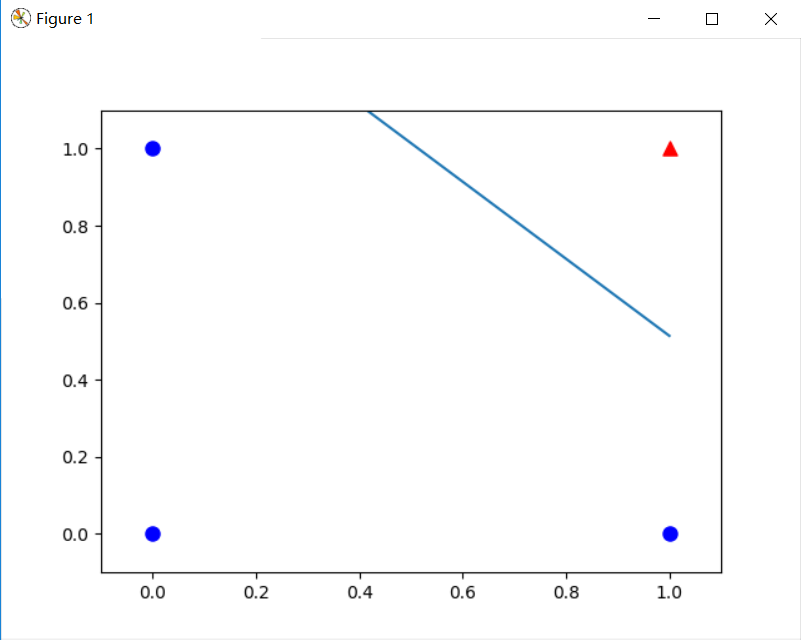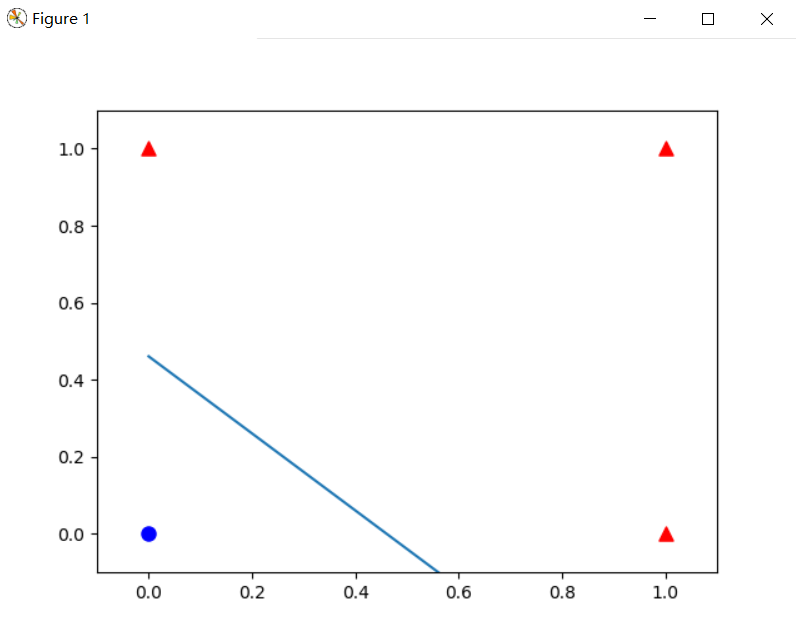训练逻辑与门和逻辑或门
作业要求
作业正文
代码
import numpy as np
import matplotlib.pyplot as plt
# x1=0,0,1,1
# x2=0,1,0,1
# y =0,0,0,1
def ReadData_And():
X = np.array([0,0,1,1,0,1,0,1]).reshape(2,4)
Y = np.array([0,0,0,1]).reshape(1,4)
return X,Y
# x1=0,0,1,1
# x2=0,1,0,1
# y =0,1,1,1
def ReadData_Or():
X = np.array([0,0,1,1,0,1,0,1]).reshape(2,4)
Y = np.array([0,1,1,1]).reshape(1,4)
return X,Y
def Sigmoid(x):
s = 1/(1+np.exp(-x))
return s
def ForwardCalculation(w,b,x):
z = np.dot(w , x) + b
a = Sigmoid(z)
return a
def BackPropagation(x,y,z):
m = x.shape[1]
dZ = z - y
dB = dZ.sum(axis=1 , keepdims = True)/m
dW = np.dot(dZ , x.T)/m
return dW, dB
def UpdateWeights(w, b, dW, dB, eta):
w = w - eta*dW
b = b - eta*dB
return w,b
def CheckLoss(w, b, X, Y):
m = X.shape[1]
a = ForwardCalculation(w, b, X)
# Cross Entropy
n = np.sum(-(np.multiply(Y, np.log(a)) + np.multiply(1 - Y, np.log(1 - a))))
loss = n / m
return loss
# 初始化参数
def InitialWeights(num_input, num_output):
W = np.zeros((num_output, num_input))
B = np.zeros((num_output, 1))
return W, B
def ShowResult(W,B,X,Y):
w = -W[0,0]/W[0,1]
b = -B[0,0]/W[0,1]
x = np.array([0,1])
y = w * x + b
plt.plot(x,y)
# 画出原始样本值
for i in range(X.shape[1]):
if Y[0,i] == 0:
plt.scatter(X[0,i],X[1,i],marker="o",c='b',s=64)
else:
plt.scatter(X[0,i],X[1,i],marker="^",c='r',s=64)
plt.axis([-0.1,1.1,-0.1,1.1])
plt.show()
if __name__ == '__main__':
# initialize_data
eta = 0.5
eps = 2e-3
max_epoch = 10000
# calculate loss to decide the stop condition
loss = 5
# create mock up data
X, Y = ReadData_Or()
#w, b = np.random.random(),np.random.random()
w, b = InitialWeights(X.shape[0],Y.shape[0])
# count of samples
num_features = X.shape[0]
num_example = X.shape[1]
for epoch in range(max_epoch):
for i in range(num_example):
# get x and y value for one sample
x = X[:,i].reshape(num_features,1)
y = Y[:,i].reshape(1,1)
# get z from x,y
z = ForwardCalculation(w, b, x)
# calculate gradient of w and b
dW, dB = BackPropagation(x, y, z)
# update w,b
w, b = UpdateWeights(w, b, dW, dB, eta)
# calculate loss for this batch
loss = CheckLoss(w,b,X,Y)
if loss < eps:
break
print("epoch=",epoch,"loss=",loss,"w=",w,"b=",b)
ShowResult(w,b,X,Y)
输出结果
逻辑与门


逻辑或门










